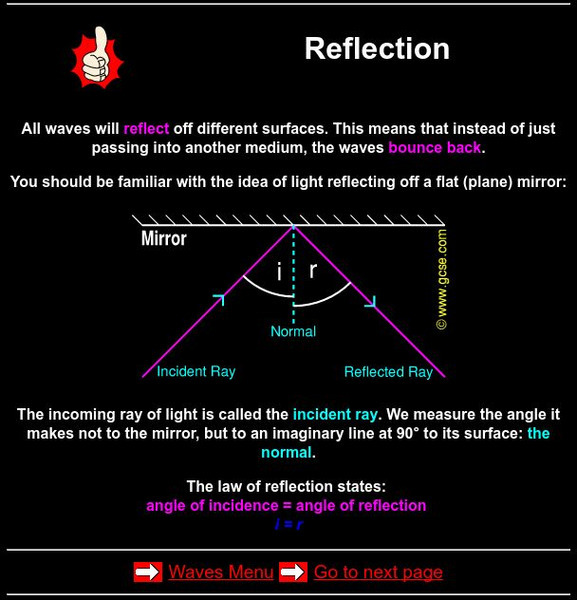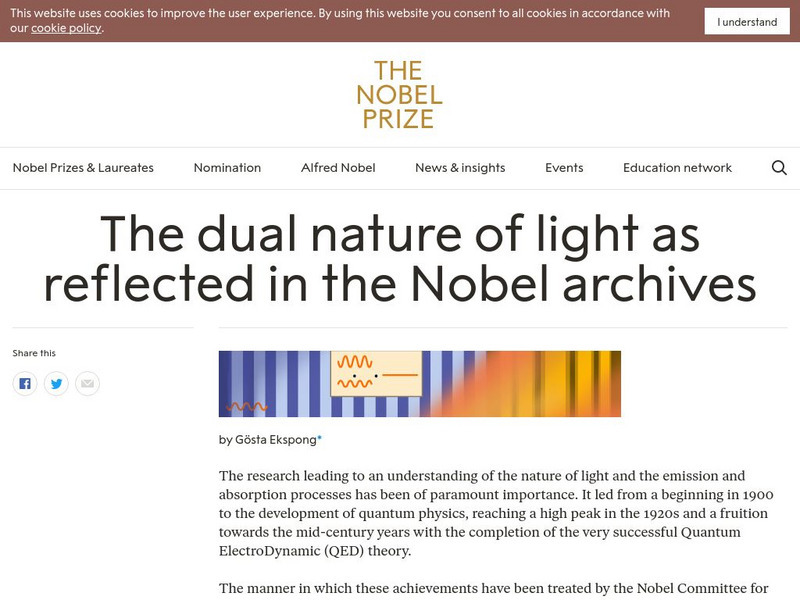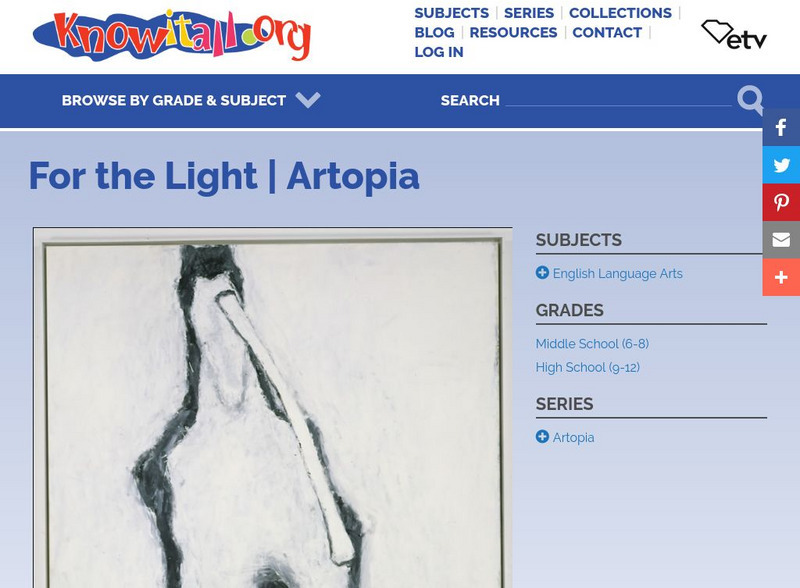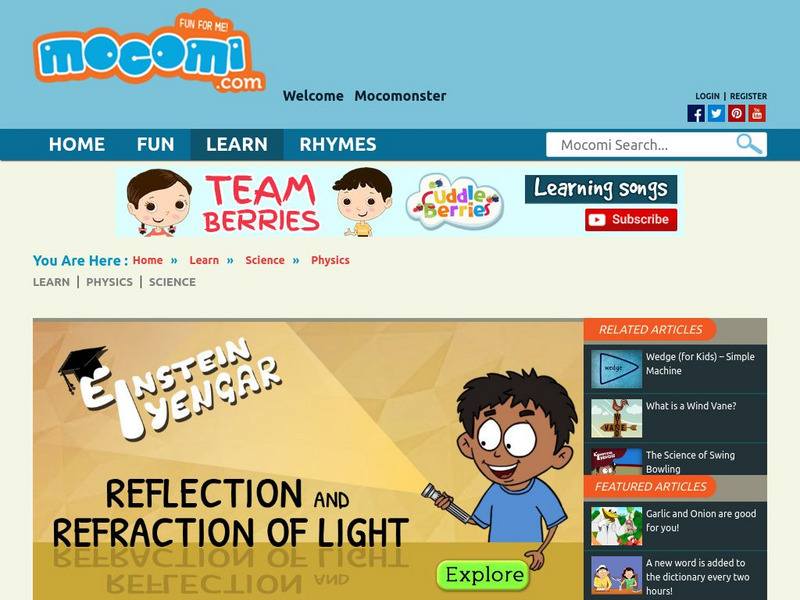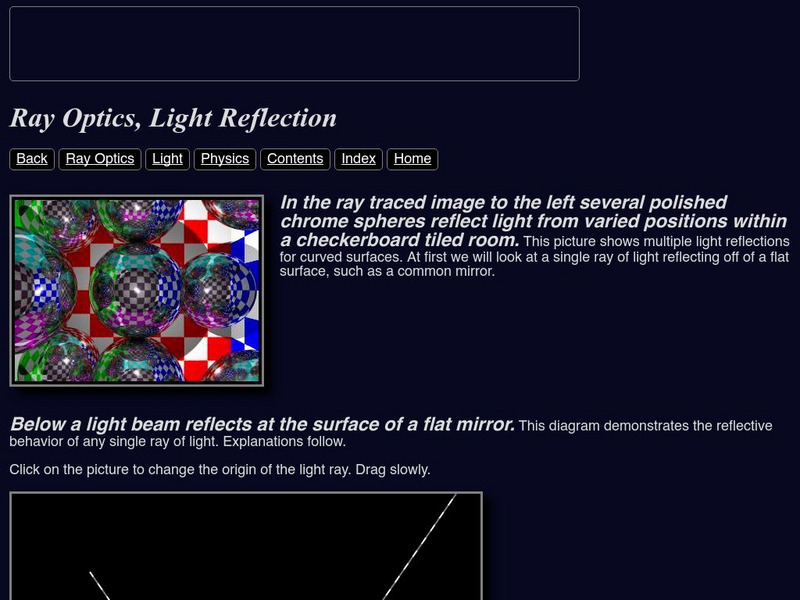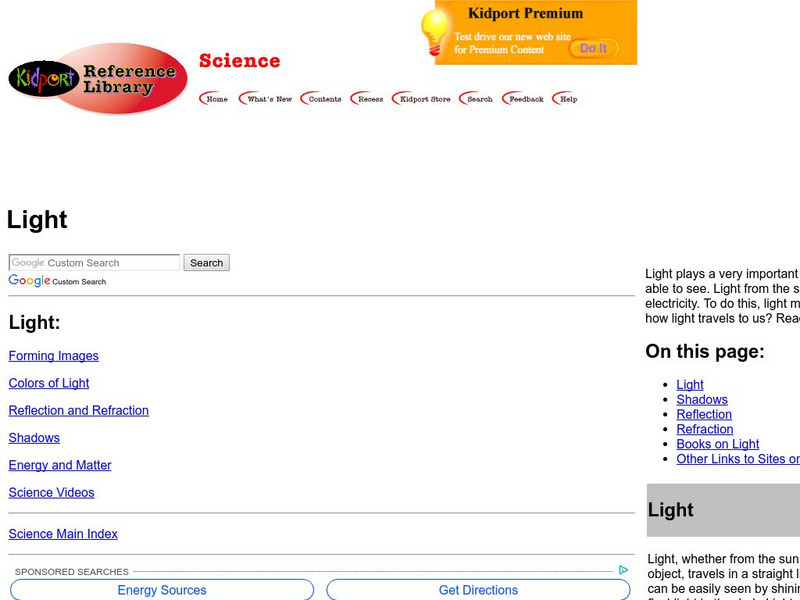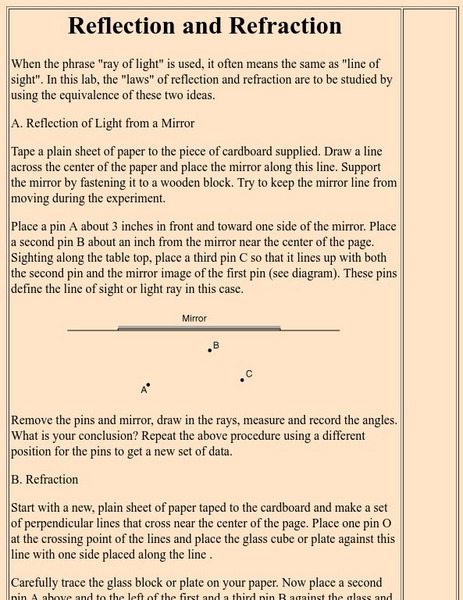TeachEngineering
Teach Engineering: How Does a Light Sensor Work?
A mini-activity, which uses LEGO MINDSTORMS NXT intelligent bricks and light sensors gives students a chance to investigate how light sensors function in preparation for the associated activity involving the light sensors and taskbots.
TeachEngineering
Teach Engineering: Sound and Light
The Sound and Light unit provides students with an understanding of sound and light waves through the theme of the "Sunken Treasure," a continuous story line throughout the lessons. In Lessons 1-5, students learn about sound, and in...
Utah Education Network
Uen: Green Light Eating
During this healthy foods instructional activity, students will sort foods into "healthy" and "unhealthy" categories.Students with then keep a food journal and reflect about their food choices.
Physics Classroom
The Physics Classroom: Reflection/ray Model of Light: Reflection/image Convex
In this physics tutorial, we will follow a pattern of inquiry for convex mirrors: investigating how convex mirrors reflect light and produce images.
Other
Gcse.com: Physics: Reflection
Informational site provides illustrated tutorial of light reflection. Also discusses the law of reflection.
Nobel Media AB
The Nobel Prize: The Dual Nature of Light as Reflected in the Nobel Archives
This article discusses the historical figures who contributed to our understanding of the nature of light, x-rays, Quantum ElectroDynamic (QED) theory, and so on.
Physics Classroom
The Physics Classroom: Reflection and Ray Model of Light: Role of Light to Sight
In this physics tutorial, students explore the phenomenon of the fact that without light, there would be no sight.
Khan Academy
Khan Academy: Light Rays
This is a quiz covering reflected, refracted, shadow, and camera rays.
Physics Classroom
The Physics Classroom: Light Waves and Color: Wavelike Behaviors of Light
In this series of interactive physics tutorials, students will focus on the wavelike nature of light.
Physics Classroom
The Physics Classroom: Light Waves and Color: Polarization
Through illustrated practice problems and video clips, students learn about polarization of light.
Physics Classroom
The Physics Classroom: Light Waves and Color: Thin Film Interference
Students investigate an example of interference that provides further evidence in support of the wavelike behavior of light.
Khan Academy
Khan Academy: An Experiment With Light Rays and a Prism
This passage will test your knowledge on reflection and Refraction - Passage 2.
South Carolina Educational Television
Etv: Artopia: Painting Critic: For the Light by Rothenberg
Questions for reflection for the painting For the Light by Susan Rothenberg. Includes image of the painting and an audio version of the questions. Includes links for more information about the painting and artist as well as a link to "My...
Mocomi & Anibrain Digital Technologies
Mocomi: Reflection and Refraction of Light
What happens when a ball is thrown against a wall? This narrative illustrates how light is reflected or refracted in different circumstances.
Optical Society
Optical Society of America: Optics for Kids: Make a Light Fountain
A simple experiment that demonstrates the concept of total internal reflection, and shows how light can travel around curves and corners, as it does in fiber-optic cables. Accompanied by an explanation of what's happening.
Curated OER
Ray Optics, Light Reflection
Site provides a diagram as well as a scientific explanation of light reflection. Includes links to ray optics, light and physics.
Mocomi & Anibrain Digital Technologies
Mocomi: What Is Scattering of Light?
Do you know why the sky is blue? Article defines scattering and how it works. Explains the difference between the scattering of light and reflection or refraction.
Kidport
Kidport: Light
Did you know that light is a form of energy and always travels in a straight line? Discover some more interesting facts about light.
Synopsys
Synopsys: Optics for Kids: What Is Light?
An explanation of what light is and some of its properties.
Optical Society
Optical Society of America: Optics for Kids: Guiding Light Optical Fiber
This experiment demonstrates the concept of total internal reflection, using basic materials. Accompanied by a detailed explanation of what's happening, and links to articles on reflection and refraction.
Georgia State University
Georgia State University: Hyper Physics: Reflection and Refraction
Reflection and refraction are explained with an experiment that uses a sheet of paper, cardboard, and other common materials.
CK-12 Foundation
Ck 12: Plix: Wave Interactions: Law of Reflection
[Free Registration/Login Required] Move the light source to see what happens to the reflected ray as you change the angle of the incident ray.
University of Minnesota
University of Minnesota: Refraction of Light
This page is a continuation of a tutorial about light reflection and refraction. It contains a diagram and suggestions on how to derive Snell's Law, which governs the refraction of light in a medium. For background to this derivation,...
Physics Classroom
The Physics Classroom: Reflection/ray Model of Light: Ray Diagrams Convex
Students learn two rules of reflection as it has to do with convex mirrors. These two rules will greatly simplify the task of determining the image locations for objects placed in front of convex mirrors.
Other popular searches
- Light Reflection
- Light Reflection Refraction
- Light Reflection Mirrors
- Light Reflection by Mirror
- Science Light Reflection
- Light Angle of Reflection
- Light Reflection and Color
- Light Reflection and Mirrors
- Light Reflection Projects
- Light and Reflection
- Light Reflection Internet
- Reflection of Light Waves






